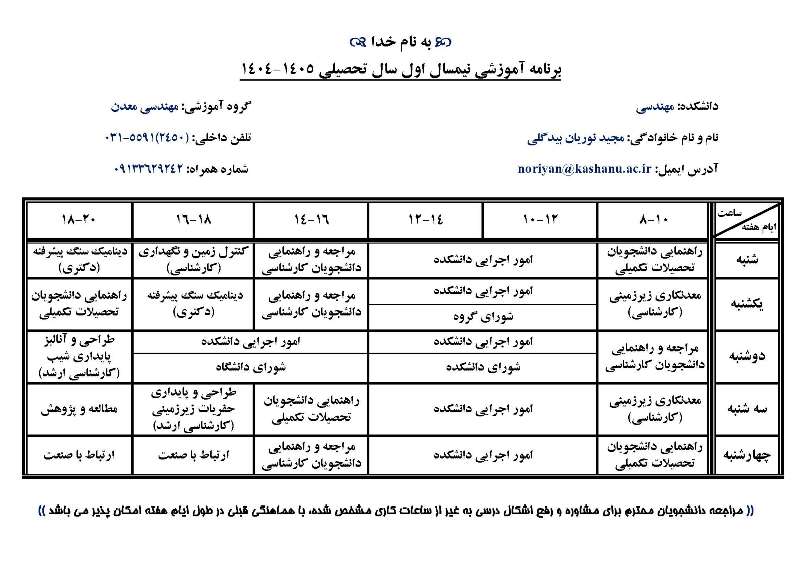| نویسندگان | Majid Noorian-Bidgoli, Lanru Jing |
|---|---|
| نشریه | Journal of Rock Mechanics and Geotechnical Engineering |
| نوع مقاله | Full Paper |
| تاریخ انتشار | 2014 |
| رتبه نشریه | علمی - پژوهشی |
| نوع نشریه | چاپی |
| کشور محل چاپ | چین |
| نمایه نشریه | ISI ,SCOPUS ,ISC |
چکیده مقاله
Anisotropy of the strength and deformation behaviors of fractured rock masses is a crucial issue for design and stability assessments of rock engineering structures, due mainly to the non-uniform and non-regular geometries of the fracture systems. However, no adequate efforts have been made to study this issue due to the current practical impossibility of laboratory tests with samples of large volumes containing many fractures, and the difficulty for controlling reliable initial and boundary conditions for large-scale in situ tests. Therefore, a reliable numerical predicting approach for evaluating anisotropy of fractured rock masses is needed. The objective of this study is to systematically investigate anisotropy of strength and deformability of fractured rocks, which has not been conducted in the past, using a numerical modeling method. A series of realistic two-dimensional (2D) discrete fracture network (DFN) models were established based on site investigation data, which were then loaded in different directions, using the code UDEC of discrete element method (DEM), with changing confining pressures. Numerical results show that strength envelopes and elastic deformability parameters of tested numerical models are significantly anisotropic, and vary with changing axial loading and confining pressures. The results indicate that for design and safety assessments of rock engineering projects, the directional variations of strength and deformability of the fractured rock mass concerned must be treated properly with respect to the directions of in situ stresses. Traditional practice for simply positioning axial orientation of tunnels in association with principal stress directions only may not be adequate for safety requirements. Outstanding issues of the present study and suggestions for future study are also presented.

